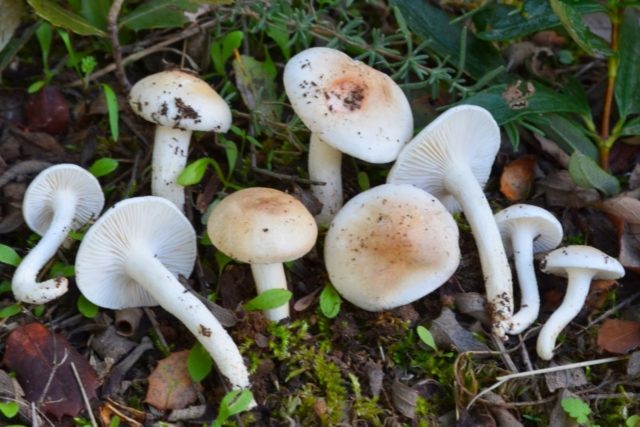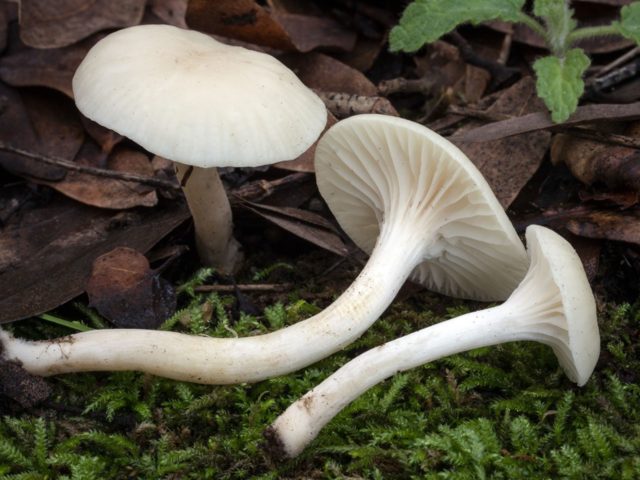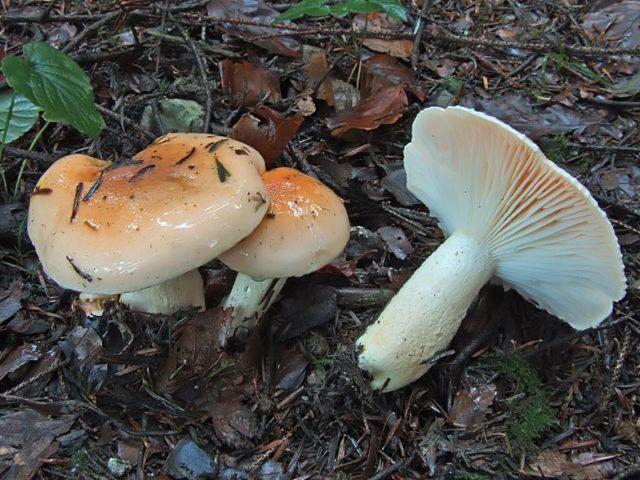Content
The beech hygrophorus (Hygrophorus leucophaeus) is a little-known conditionally edible mushroom with an interesting pulp taste. It is not particularly popular due to its small size. It is also called Lindtner's hygrophor or ash gray.
What does a beech hygrophor look like?
Gigrofor beech belongs to the lamellar mushrooms of the Gigroforov family. In young specimens, the cap is almost spherical, but gradually opens and acquires a flat shape. It is elastic, very thin, very little pulp. The surface of the mushroom is smooth. In rainy summers, when the humidity is high enough, it becomes sticky. The skin color is often white or pale pink, the transition is smooth, the color is uniform. White adherent plates are visible under the cap. They are rarely located.
The beech gigrofor rests on a thin cylindrical stem. It widens slightly at the base. The surface is covered with a mealy bloom. The internal structure is dense, rather firm. The color is uneven. Above it is predominantly white, and below it is cream or red.
The pulp of the fruiting body is watery. Painted in white or slightly pink. After destruction, the color does not change, the milky juice is absent. Fresh mushroom is odorless; after heat treatment, an unobtrusive floral aroma appears. The taste has pronounced nutty notes.
Where the beech hygrophor grows
You can meet him wherever there are beech forests. It is widespread in the Caucasus and Crimea. Mycelium grows well high in the mountains. Fruiting bodies are located in small groups on a woody substrate that contains remnants of the bark.
Is it possible to eat beech hygrophor
Gigrofor beech belongs to conditionally edible mushrooms. However, it is practically not collected. The caps contain little pulp, and the size of the fruiting body is small. Although seasoned mushroom pickers specifically go up the mountains after him in the fall to enjoy the indescribable taste.
False doubles
Gigrofor beech has a great similarity with other representatives of the species, from which it differs only in the color of the cap and the place of growth.
Outwardly, it may resemble a girl's hygrophor. However, the latter begins to bear fruit in the summer. Moreover, his hat is always painted white. It is found not only in the mountains, but also along paths, in meadows and plains. The twin is not poisonous, but does not represent any special nutritional value.
You can confuse a mushroom with a pinkish hygrophor. It is slightly similar in color, but grows much larger. His plates are frequent, the leg is thick and high. Distributed in North America and regions with a temperate climate. More often found in coniferous forests, near fir trees. Refers to conditionally edible.
The edible beech-shaped hygrophor has almost absolute similarity. However, it is impossible to meet him on the territory of the Russian Federation. The mushroom is widespread in Sweden. The mushroom settles nearby oak trees, which are found in deciduous forests.
Collection rules and use
Collect young specimens that are rich in nutrients. They must be intact, with no visible signs of parasites.
The fruit body is eaten fried, stewed or pickled. You do not need to boil it beforehand.
Conclusion
Gigrofor beech is a fragile mushroom that requires careful collection. Its flesh is not too firm, but tasty enough. Mushroom pickers know a lot of cooking recipes that will impress any gourmet.











